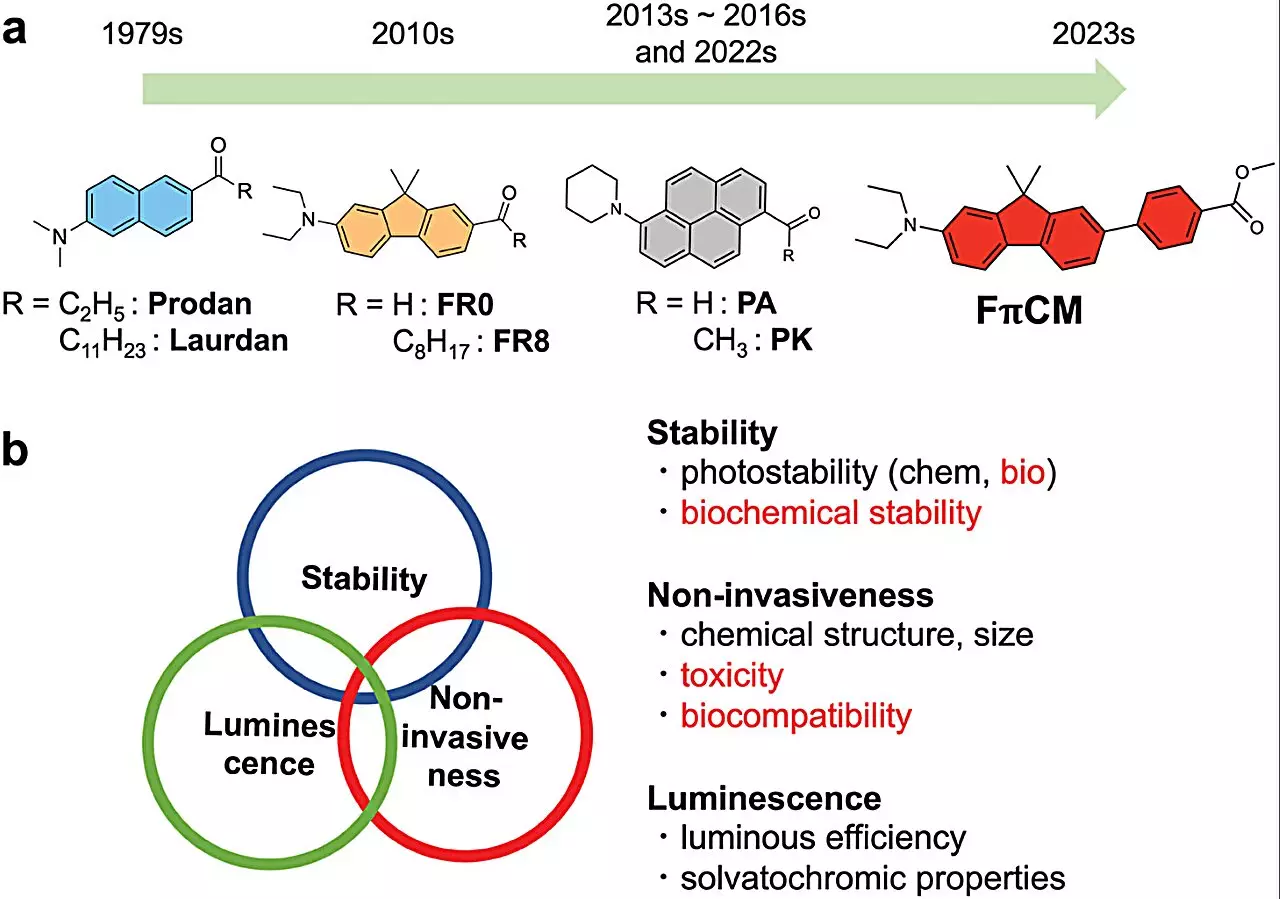The use of solvatochromic probes in studying lipid membrane fluidity is crucial for understanding various cellular functions. A recent study by scientists at Tokyo Institute of Technology and Kyushu University has introduced a new solvatochromic dye that offers exceptional stability, low toxicity, and remarkable fluorescent properties. This innovation opens up the possibility of visualizing dynamic changes in lipid membrane order during complex cellular processes, such as cell division.
Lipid membranes serve as more than just physical barriers in cells; they play essential roles in processes like cell movement, material exchange, waste management, and sensing. These functions are facilitated by the intricate integration of proteins and other molecules in the membrane structure, which can affect its fluidity and order. Abnormalities in lipid membrane order have been linked to various diseases, highlighting the significance of studying lipid membrane fluidity.
Traditional solvatochromic dyes used to visualize lipid membrane fluidity face challenges such as low stability, weak fluorescent emissions, cell toxicity, and dependence on ultraviolet light for excitation. These limitations have hindered the accurate observation of real-time changes in lipid membrane order during cellular processes.
In response to these challenges, a research team from Tokyo Institute of Technology and Kyushu University designed a novel solvatochromic dye to address the drawbacks of existing probes. Led by Associate Professor Gen-ichi Konishi and Professor Junichi Ikenouchi, the team developed a dye called 2-N,N-diethylamino-7-(4-methoxycarbonylphenyl)-9,9-dimethylfluorene (FπCM) with a unique molecular structure that enhances its solvatochromic and fluorescent properties.
The proposed dye, FπCM, demonstrated outstanding fluorescent properties and chemical stability in various environments, including living cells. Unlike conventional dyes, FπCM exhibited long-term photostability, lasting approximately five hours under intense laser light. This extended stability allows for continuous observation of lipid membrane fluidity, including during cell division, without compromising the dye’s effectiveness.
The novel solvatochromic probe can be further modified to target specific lipid membranes within cells, such as those in organelles like mitochondria and the endoplasmic reticulum. This capability opens up new avenues for studying the correlation between membrane protein activation and membrane fluidity transitions in response to stimuli. By shedding light on these mechanisms, researchers hope to gain a deeper understanding of diverse membrane functions and their implications in cellular processes.
The development of innovative solvatochromic probes like FπCM represents a significant advancement in the field of cellular biology. These probes offer new possibilities for visualizing and studying lipid membrane fluidity in real-time, providing valuable insights into the complex interactions that govern cellular functions. As research continues to explore the capabilities of these novel probes, we can expect further discoveries that will enhance our understanding of the intricate processes that occur within cells.


Leave a Reply